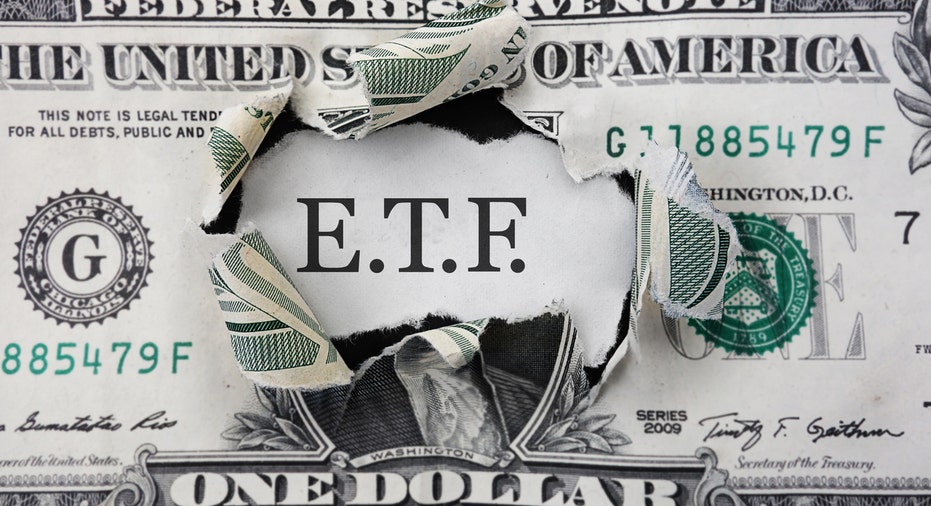Three tips for smart dividend ETF plays

Pop quiz: What percentage of long-term stock market returns are thanks to the humble dividend? Five? 10? 20?
Try 90 percent, according to money managers BlackRock Inc .
That may explain a curious phenomenon happening with exchange-traded funds (ETFs) that focus on dividends. Conventional wisdom holds that in a rising interest rate environment, investors usually shed dividend stocks as they look towards fixed income instead.
But over the past year, money has continued to be sucked up by prominent ETFs like Vanguard High Dividend Yield ($2.7 billion) and Schwab U.S. Dividend Equity ($1.35 billion), according to data provided by Chicago-based research shop Morningstar.
If you are a die-hard income lover, here is some free advice: Not all dividend ETFs are created equal.
"The biggest thing is to look for funds that balance quality with yield," said Adam McCullough, a passive strategies analyst at Morningstar.
"You want to make sure that dividend payment is sustainable, and supported by earnings going forward."
That is because, in some cases, a juicy dividend can be a clever trap. Sometimes, the stocks with the highest yields are in real financial trouble. A tanking share price will push a yield higher, or companies will offer sky-high dividends in order to lure investors and patch over financials that are in mortal danger.
Another landmine: Rate-sensitive dividend stocks. Once interest rates rise and bonds start paying out more, investors' desire for some dividend payers (utilities, say) tends to wane, putting downward pressure on share prices. More than three-quarters of economists and analysts recently surveyed by CNBC predict that the Federal Reserve will hike rates again in December.
If you navigate correctly, you could be rewarded handsomely. That is because in a flat or down market investors tend to gravitate towards safer defensive plays like dividend stocks.
Why so? First, investors like to get paid while they wait. And second, when high-flying speculative stocks come crashing down to earth, investors take refuge in sturdier sectors with proven revenues and long dividend histories.
But which dividend ETFs might be smart plays going forward, and how can you pick among them? There are now around 160 U.S.-listed ETFs with a dividend focus, notes Neena Mishra, director of ETF research for Zacks Investment Research in Chicago. Like any other market niche, you have to be smart about where you pick your spots. A few tips:
* Look for dividend growth, not just yield.
By focusing on companies that are actively growing their dividends, you can load up on firms whose cash flow and balance sheets are trending in a positive direction.
One that gets lots of plaudits: Vanguard Dividend Appreciation. This ETF - gold-rated by Morningstar - might not at first jump out for income-seekers, since its average yield of around 2 percent is not that different from the broader S&P 500.
But growing dividends equates to giving yourself regular raises. Top holdings include reliable names like Microsoft Corp , Johnson & Johnson, PepsiCo Inc and 3M Co (MMM). Perhaps best of all for fee-minded investors, its expense ratio is a negligible .08 percent.
* Avoid rate-sensitive stocks.
Another winner is iShares Core Dividend Growth, advises Zacks' Mishra. This ETF is thoughtful about sectoral makeup, and not being too exposed to industries that are likely to tank along with higher interest rates.
For instance, it is 18 percent comprised of information technology (IT) companies - which should be able to weather rate hikes just fine - and only 4 percent exposed to utilities. Not only does Mishra point out it is "really cheap," with a .09 percent expense ratio, but it seems to be on a performance roll, clobbering its benchmarks year-to-date by almost 4 percentage points.
* Go global.
Average yields often tend to be higher in stock markets around the world. So for some international flavor, check out iShares Edge MSCI Minimum Volatility EAFE. While dividends may not be explicitly broadcast in the fund's name, it does boast an average yield of almost 4 percent.
Since top holdings range from Novartis AG to Nestle SA to Hang Seng Bank, its basket of foreign stocks also acts as a natural currency hedge against the U.S. portion of your portfolio.
This ETF is benefiting from some global trends: Dividends have been on the rise around the world thanks to climbing global growth, improved corporate governance practices, and increased payouts from financial institutions. That is the kind of news income investors love to hear.
(By Chris Taylor; Editing by Beth Pinsker and Marcy Nicholson)



















